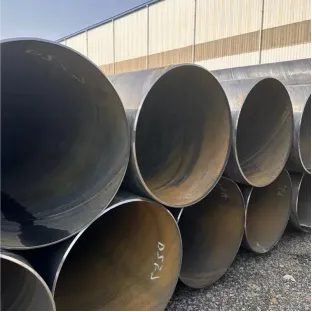-
Cangzhou Yulong Steel Co., Ltd.
-
Phone:
+86 13303177267 -
Email:
admin@ylsteelfittings.com
- English
- Arabic
- Italian
- Spanish
- Portuguese
- German
- kazakh
- Persian
- Greek
- French
- Russian
- Polish
- Thai
- Indonesian
- Vietnamese
- Zulu
- Korean
- Uzbek
- Hindi
- Serbian
- Malay
- Ukrainian
- Gujarati
- Haitian Creole
- hausa
- hawaiian
- Hebrew
- Miao
- Hungarian
- Icelandic
- igbo
- irish
- Japanese
- Javanese
- Kannada
- Khmer
- Rwandese
- Afrikaans
- Albanian
- Amharic
- Armenian
- Azerbaijani
- Basque
- Belarusian
- Bengali
- Bosnian
- Bulgarian
- Catalan
- Cebuano
- China
- China (Taiwan)
- Corsican
- Croatian
- Czech
- Danish
- Esperanto
- Estonian
- Finnish
- Frisian
- Galician
- Georgian
- Kurdish
- Kyrgyz
- Lao
- Latin
- Latvian
- Lithuanian
- Luxembourgish
- Macedonian
- Malgashi
- Malayalam
- Maltese
- Maori
- Marathi
- Mongolian
- Myanmar
- Nepali
- Norwegian
- Norwegian
- Occitan
- Pashto
- Dutch
- Punjabi
- Romanian
- Samoan
- Scottish Gaelic
- Sesotho
- Shona
- Sindhi
- Sinhala
- Slovak
- Slovenian
- Somali
- Sundanese
- Swahili
- Swedish
- Tagalog
- Tajik
- Tamil
- Tatar
- Telugu
- Turkish
- Turkmen
- Urdu
- Uighur
- Welsh
- Bantu
- Yiddish
- Yoruba

Nov . 07, 2024 12:41 Back to list
Curved 3D Pipe Design for Fluid Transport and Structural Applications
Understanding 3D Bend Pipes Techniques, Applications, and Innovations
In the realm of modern engineering and manufacturing, the design and implementation of piping systems play a crucial role in various industries. Among the different types of pipes used, 3D bend pipes stand out for their versatility, efficiency, and ability to enhance fluid dynamics within systems. Whether in plumbing, oil and gas, or even aerospace, the application of 3D bends in piping systems can optimize flow while minimizing turbulence. This article delves into the techniques, applications, and innovations surrounding 3D bend pipes.
What are 3D Bend Pipes?
3D bend pipes are characterized by their radius of curvature, which is three times the nominal diameter of the pipe. This design allows for a smoother transition of fluids, reducing pressure drops and minimizing flow resistance. Unlike sharp bends, which can create turbulence and disrupt fluid flow, 3D bends facilitate a gradual change in direction. This quality makes them particularly useful in sophisticated piping systems where fluid dynamics are a critical consideration.
Manufacturing Techniques
The production of 3D bend pipes is typically carried out through a variety of methods, including
1. Bending Machines These machines can produce 3D bends with high precision. CNC (Computer Numerical Control) bending machines are particularly effective, allowing manufacturers to create consistent and accurate bends according to specified parameters.
2. Heat Bending For certain materials, heat bending is an effective technique. By heating the pipe to a pliable state, it can be shaped into a 3D bend without compromising structural integrity.
3. Elbow Forming This method involves creating pre-fabricated 3D bends, often used in larger, industrial piping applications. Elbows can be cast or manufactured and then connected to straight sections of pipe.
4. Laser Cutting Advanced laser cutting technology allows for intricate designs and precise measurements, which can be crucial in custom 3D bend applications.
Applications of 3D Bend Pipes
3d bend pipe

The versatility of 3D bend pipes lends them to a variety of applications
- Oil and Gas Industry In upstream and downstream processes, 3D bends are utilized to navigate complex piping layouts in refineries and drilling sites. Their ability to reduce wear and tear on the pipes results in cost savings and increased safety.
- HVAC Systems In heating, ventilation, and air conditioning systems, 3D bends are employed to connect ductwork and enhance air circulation. Their smooth transitions improve energy efficiency and reduce noise.
- Water Supply Systems Municipal waterworks often utilize 3D bends to facilitate the movement of water through complex infrastructures. These pipes help maintain water pressure and reduce leaks.
- Aerospace and Automotive Industries The lightweight and high-strength characteristics of specially designed 3D bends are vital in creating efficient fuel and cooling systems in aircraft and vehicles.
Innovations and Future Directions
As technologies continue to evolve, the manufacturing and application of 3D bend pipes are also advancing. Innovations such as 3D printing are beginning to make an impact, allowing for the rapid prototyping of custom designs. This approach can significantly reduce production times and costs, making it easier to develop tailormade solutions for specific projects.
Moreover, the integration of smart technologies is set to revolutionize how piping systems operate. Sensors embedded within 3D bend pipes can monitor flow rates and detect leaks in real time, providing data that can be used for instantaneous adjustments and long-term maintenance planning. This predictive approach not only enhances the efficiency of systems but also contributes to sustainability efforts by minimizing waste and reducing the environmental impact of piping networks.
Conclusion
In conclusion, 3D bend pipes have become indispensable components in various industries, thanks to their efficiency in fluid transport and structural benefits. With manufacturing techniques continually advancing and new innovations emerging, the future of 3D bend pipes looks promising. As industries strive for greater efficiency and sustainability, these pipes will undoubtedly play a key role in shaping the next generation of piping systems. By understanding their features, applications, and the technology behind them, stakeholders can make informed decisions to optimize their projects and ensure seamless operations.
Latest news
-
ANSI 150P SS304 SO FLANGE
NewsFeb.14,2025
-
ASTM A333GR6 STEEL PIPE
NewsJan.20,2025
-
ANSI B16.5 WELDING NECK FLANGE
NewsJan.15,2026
-
ANSI B16.5 SLIP-ON FLANGE
NewsApr.19,2024
-
SABS 1123 FLANGE
NewsJan.15,2025
-
DIN86044 PLATE FLANGE
NewsApr.19,2024
-
DIN2527 BLIND FLANGE
NewsApr.12,2024
-
JIS B2311 Butt-Welding Fittings LR/SR 45°/90° /180°Seamless/Weld
NewsApr.23,2024











